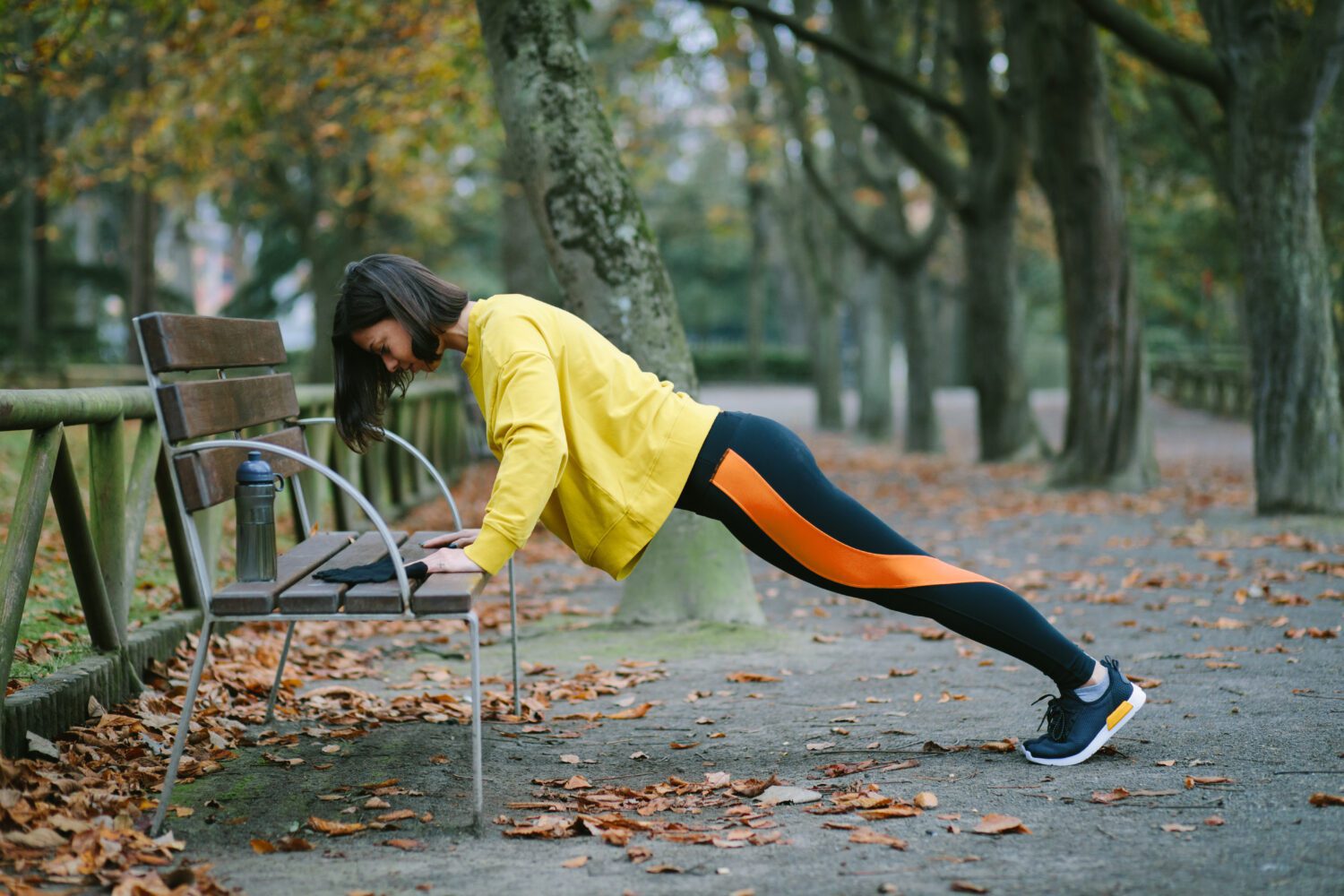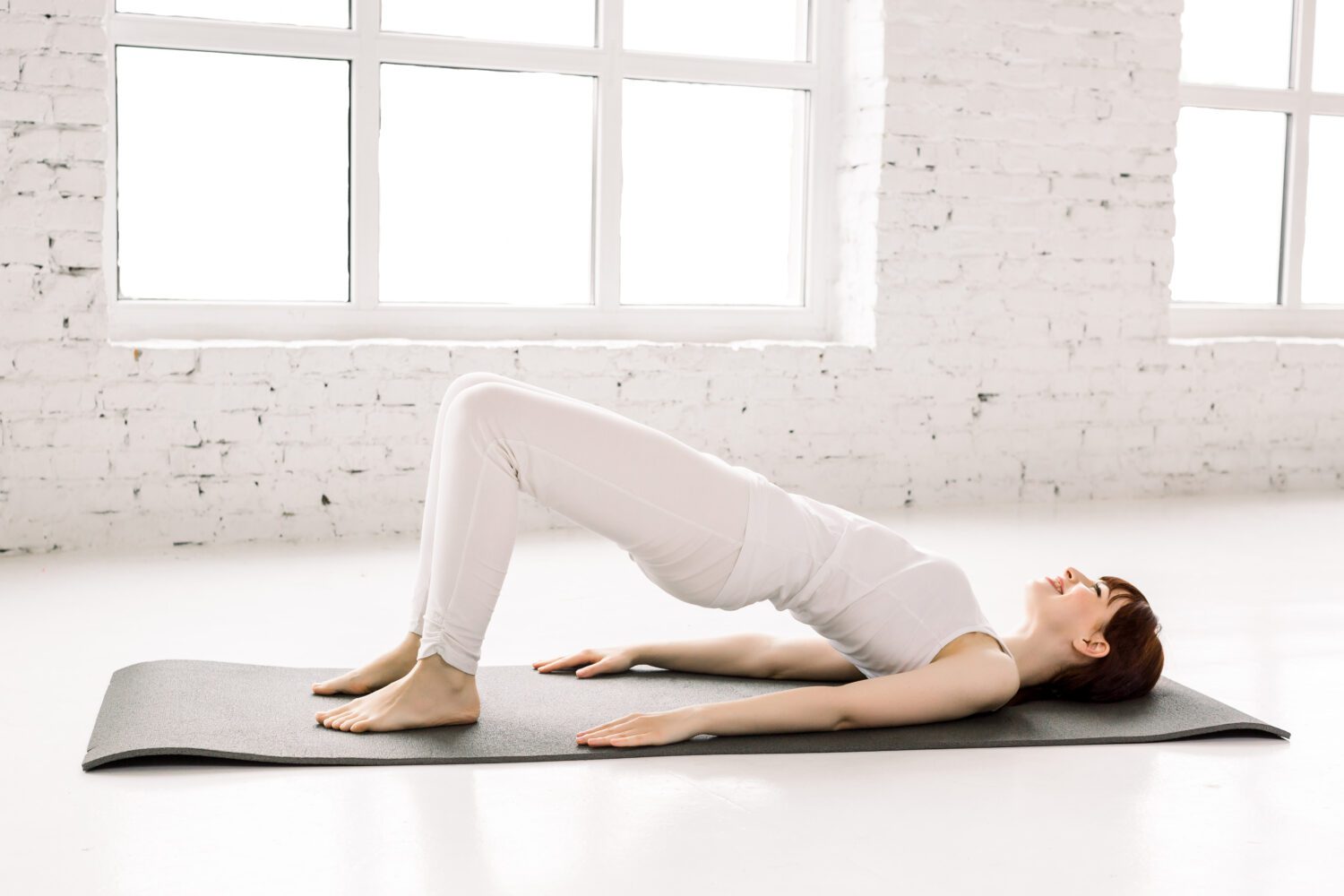Make a note of all five and see if they help you to structure a balanced Pilates session for your clients.
Push-Up

Why? This is a great exercise to transition from standing to the floor at the start of a class or to transition from the mat to standing at the end of a class. Joseph Pilates used this exercise at the end of his sessions. This exercise is also an upper body strengthening exercise which encourages a balanced all-over body strengthening workout within the class.
Adaptations and modifications – for clients with knee or wrist issues, place a towel under their knees and hands for extra comfort and support. For clients who find a press-up even in a Box position too much, encourage knee lifting first to strengthen the upper body and the client will gain confidence.
Progressions – encourage a full press-up and if this is mastered think about including a full tricep press-up. A tricep press-up can be offered to clients who have been performing a ¾ chest press for a long period of time to give them a focus on a different muscle group.
Shoulder Bridge

Why? Lower back stiffness is a common back complaint amongst hundreds of thousands of people and this exercise, in its basic form, is a great lower back mobiliser. The tilt of the pelvis at the start of The Bridge and again at the end of The Bridge really helps mobility issues in the lumbar spine. Pelvic tilts on their own are often used in my classes for the same purpose or simply as a preparatory movement for the full Shoulder Bridge.
Progression – the leg lift is the normal progression for this exercise and the level of intensity can be progressed over time as you move from raising the thigh (with knee flexed) right through to fully extended leg. Increase strength through the glutes and hamstrings by trying a hip opener when rolling into The Bridge. Cross the right ankle over the left knee, open out the hip and keeping this open, roll The Bridge up as normal. Inhale and roll The Bridge down, being careful to keep the pelvis stable and the hip open. Repeat 3-5 times and swap sides – this requires good strength and control.
Modification – If lumbar mobility is an issue for a client, keep them practising the lumbar roll with pelvic tilts, increasing the range of movement solely over the weeks before increasing the range of movement further.
Adaptations – to increase pelvic stability, place a ball between the knees of a basic Bridge. At the top of The Bridge squeeze it 1-3 times and then squeeze it the same amount of times when back on the floor at the bottom of the movement. Using props adds a different focus for the class and brings added interest to you as a teacher as well as the participants.
Swan Dive/Rear Deltoid Squeeze
Why? With postural issues being extremely common in my classes and generally in this day and age, the Swan Dive is another great exercise to help improve posture in the thoracic spine. By introducing the Rear Deltoid Squeeze after or instead of the Swan Dive, the upper back gets introduced into the movement and the shoulders are rotated backwards, again really helping to open the chest, promoting overall improved posture.
Modifications – keep the arms by the side with palms up if shoulder issues cause problems with the Swan Dive exercise. This decreases the intensity of the exercise but it is the start position to the Rear Deltoid Squeeze where the shoulder rotation can be bought in gradually.
Progressions – when reaching the arms forward in the Swan Dive exercise, try lengthening and lifting one leg as well. Keep the leg long and low, as in the Swimming Prone exercise. This brings in further core stability lower back strengthening and glute strengthening as well.
Written by Heather Oakes